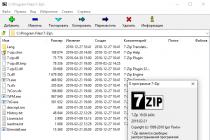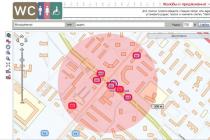Sometimes there is a need to charge a Li-Ion battery, consisting of several cells connected in series. Unlike Ni-Cd batteries, Li-Ion batteries require additional system control, which will monitor the uniformity of their charge. Charging without such a system will sooner or later damage the battery cells, and the entire battery will be ineffective and even dangerous.
Balancing is a charge mode that monitors the voltage of each individual cell in the battery pack and does not allow the voltage on them to exceed a set level. If one of the cells is charged before the rest, the balancer takes on excess energy and converts it into heat, preventing the charge voltage of a particular cell from exceeding.
For Ni-Cd batteries, there is no need for such a system, since each battery cell stops accepting energy when its voltage is reached. A sign of Ni-Cd charge is an increase in voltage to a certain value, followed by a decrease in it by several tens of mV and an increase in temperature, since excess energy is converted into heat.
Ni-Cd must be completely discharged before charging, otherwise a memory effect will occur, which will lead to a noticeable decrease in capacity, and it can only be restored after a few full charge / discharge cycles.
With Li-Ion batteries, the opposite is true. Discharging to too low voltages causes degradation and irreversible damage with an increase in internal resistance and a decrease in capacitance. Also, full-cycle charging will wear out the battery faster than recharging. The Li-Ion battery does not show any charging symptoms like Ni-Cd does, so Charger cannot detect the moment of full charge.
Material: ABS + Metal + Acrylic Lenses. LED lights...
Li-Ion is usually charged according to the CC / CV method, that is, at the first stage of charging, a constant current is set, for example, 0.5 C (half of the capacity: for a battery with a capacity of 2000 mAh, the charge current will be 1000 mA). Further, upon reaching the final voltage provided by the manufacturer (for example, 4.2 V), the charge is continued with a stable voltage. And when the charge current drops to 10..30mA, the battery can be considered charged.
If we have a battery of accumulators (several batteries connected in series), then we charge, as a rule, only through the terminals at both ends of the whole package. At the same time, we have no way to control the charge level of individual links.
It is possible that it will be so that one of the elements will have a higher internal resistance or a slightly lower capacity (as a result of battery wear), and it will reach a charge voltage of 4.2 V faster than the rest, while the rest will have only 4.1 B, and the entire battery will not show a full charge.
When the battery voltage reaches the charge voltage, the weak cell may be charged to 4.3V or more. With each such cycle, such an element will wear out more and more, deteriorating its parameters, until this leads to the failure of the entire battery. Moreover, the chemical processes in Li-Ion are unstable and when the charge voltage is exceeded, the battery temperature rises significantly, which can lead to spontaneous combustion.
Simple balancer for li-ion batteries
What then is to be done? In theory, the easiest way is to use a zener diode connected in parallel to each battery cell. When the breakdown voltage of the zener diode is reached, it will begin to conduct current, not allowing the voltage to rise. Unfortunately, a 4.2V zener diode is not easy to find, and 4.3V will already be too much.
The way out of this situation can be the use of a popular one. True, in this case, the load current should not exceed more than 100 mA, which is very small for charging. Therefore, the current must be amplified using a transistor. This circuit, connected in parallel to each cell, will protect it from overcharging.
This is a slightly modified typical TL431 wiring diagram and can be found in the datasheet under the name “hi-current shunt regulator”.

Science does not stand still, as a result of which lithium-polymer batteries have become an integral part of our daily life. Some 18650 cells are worth something - only the lazy does not know about them. Moreover, in the hobby of radio-controlled models, there has been a qualitative leap to a new level! Compactness, high current efficiency and low weight provide a wide field for improvement existing systems power supply based on batteries.
Science has gone even further, but for now we will focus on the Li Ion version (lithium-ion).
So, the store bought a Turnigy charging and balancing device for charging 2S and 3S assemblies of lithium-polymer batteries (a type of lithium-ion, hereinafter LiPo). 


My radio-controlled foam (model made of foam ceiling tiles) Cessna 150 has a 2S battery - the number in front of the S indicates the number of LiPo cells connected in series. Charging was less than before, but carrying a charger in the field can be simpler and cheaper.
Why so many troubles?
When charging lithium-polymer batteries, several rules must be observed: the current strength must be maintained at the level of 0.5C ... 1C, and the battery voltage must not exceed 4.1 ... 4.2 V.
If there are several series-connected cells in the assembly, then small deviations in one of them lead over time to premature damage to the batteries if the circuit is not balanced. This effect is not observed with NiCd or NiMh batteries.
As a rule, in an assembly, all elements have a similar, but not the same, capacity. If two cells with different capacities are connected in series, then the cell with the smaller capacity is charged faster than the one with the larger one. Since the charging process takes place until the cell is charged from the very large capacity, the battery with the lower capacity will be recharged. On the other hand, during discharge, cells with a lower capacity are discharged faster. This leads to the fact that after many charge-discharge cycles, the difference in capacitance increases, and due to frequent recharging, the cells from the very small capacity quickly deteriorate.
This problem can be easily eliminated by monitoring the potential of the elements and making sure that all the elements in the block have exactly the same voltage.
Therefore, it is highly desirable to use not just a charger, but with a balancing function.
Equipment: charger + power cable with crocodiles for connecting to a 12-15 Volt power supply or a 12 Volt battery.
The charger consumes no more than 900 mA when charging.
Two indicators green and red - green power control, red is on when charging-balancing is in progress. At the end of the process or when removing the balancing connector, the red LED goes out.
Charging occurs up to a voltage of 4.2 V per cell. The voltages were measured at work, using an exemplary voltmeter. The voltages at the end of the charge on cells 1 and 2 were equal to 4.20 Volts, on cell 3 a slight overcharge of 4.24 Volts.
Dismembered:
The circuit is partly classical: a boost converter, then 3 comparators giving a signal to the controller (overwritten markings in the style of the Chinese) But the power part of the circuit caused bewilderment. My carelessness became the reason to get into the giblets. I accidentally cut off the balancing wires on the 3S battery (from a screwdriver) and, when soldering, mixed up the output of 1 and 3 elements, as a result, when connected to the charger (charger), smoke went out of the latter. Visual inspection revealed a faulty N010X transistor for which I did not find a description, but I found a reference to an analog - it turned out to be a P channel field-effect transistor 

The rest of the parts turned out to be in good order when checked. There were no stocks of P channel field workers at home, the prices in the local store are frantic. This is where the ancient Zuxel dialup modem came in handy, in which the detail I needed turned out to be (with more the best characteristics). Since the vision and dimensions of the part did not make it possible to put everything in place, I had to be perverted and install the part in the free space on the back side.
I did not like the fact that in the 2S mode the charger works like most similar ones in the power section, but with the 3rd element it is not so simple. The part burned out for a reason, it performed the function of supplying voltage to the charged battery as a whole. Functionally, all three cells are charged at once, as cells 1 and 2 are charged, the transistors open and shunt the elements through the resistors, thereby allowing the current to bypass the charged cells. The field-effect transistor cuts off the voltage as a whole, it also controls the charge of the 3rd element. And if the 3rd element was charged before the 1st and 2nd, then the power goes through the diode to charge the remaining elements. In general scheme muddy, I come to the conclusion that the elementary economy of details.
The culprit of the adventures that fell on my head:
Bosch screwdriver converted to lithium batteries from a laptop instead of NiCd that died from crystallization. At the moment, the charger has passed into the category of a regular one for a converted screwdriver. A full charge cycle (4Ah) takes about 6 hours, but I have never discharged the battery to zero, so there is no need for a long charge.
Conclusion
Budget charger. In a particular case, it came in handy. The screwdriver is happy.
Charging current 800mA limits the minimum capacity of the charged cells. Look carefully at the description for your battery for the maximum charge current. Failure to operate properly may result in damage and fire of the batteries.
I greet everyone who looked at the light. The review will focus on, as you probably already guessed, the SkyRC e450 charging and balancing device, which allows charging in balancing mode with a current from 1A to 4A almost all types of battery assemblies (2S-4S) based on lithium (Li-Ion / Li-Pol / Li-Fe / Li HV) and nickel (NiCd / NiMH). This device is of great interest, first of all, for people who are fond of switchgear technology and have a large fleet of various model batteries. Despite the huge functionality, for ordinary users there are a couple of nuances, so anyone interested, you are welcome under cat.
General view of the SkyRC e450 charging and balancing device:
The charger was purchased taking into account the farmed points for only 20 dollars:

Brief performance characteristics:
- Manufacturer - SkyRC
- Model - e450
- Body - plastic
- Supply voltage - 100-240V
- Charging current - 1A - 4A (step 1A)
- Balancing current - 300ma
- Supported battery types:
- - - lithium (Li-Ion / Li-Poi / Li-Fe / Li HV) - 2S-4S
- - - nickel (NiCd / NiMH) - 6S-8S
- Dimensions - 110mm * 69mm * 41mm
- Weight - 225g
Equipment:
- SkyRC e450 charger
- network cable with euro plug, length 1m
- output power wire with XT60 model connector
- instruction 
The SkyRC e450 charger comes in a very compact color box made of thick corrugated cardboard: 
All the main specifications are indicated from the ends of the box: 
To connect to most model Li-Pol batteries, the kit includes a power cable with an XT60 connector at the end: 
This wire will be enough for most users, because the XT60 connector is one of the most reliable and they try to use it in most powerful RU models. Would love to see some kind of universal wire with multiple connectors (EC, T-Plug, jST and Tamiya). Although on the other hand, a second additional wire with two regular crocodiles would solve this problem, since crocodiles can connect to almost all connectors directly. If I'm not mistaken, the power connector of the e430 model is not wired at all, so you will have to buy the connector itself.
To connect to the mains, a power cable with a Euro plug is about 1m long: 
The set includes a short instruction manual in English: 
All in all, the package bundle is good, everything is available for work out of the box.
Dimensions:
The SkyRC e450 charger is very compact. Its dimensions are only 110mm * 69mm * 41mm. Here is a comparison with the common chargers for 1S-3S batteries SkyRC e3 and its clone Imax B3: 
Well, according to tradition, a comparison with a thousandth banknote and a box of matches: 
The weight of the charger is also small - about 223g: 
Appearance:
The SkyRC e450 charger is made in a black plastic case with many ventilation holes, although it does not get very hot during operation: 
In fact, this charger is a slightly modified e430 model, which adds the ability to charge high-voltage lithium batteries (HV 4,35V), as well as nickel-based batteries (NiCd / NiMH). In addition, the engineers increased the charging current to 4A and slightly changed the control. We can say that this harvester has just fantastic capabilities, except for a few BUTs, about which a little later.
The charger is not replete with controls. To control the charge, there is a single rectangular button responsible for the type of batteries, as well as a switch with a choice of charging current.
The main connectors are located at the front (power) and right (balancing) ends: 
By default, the network connector is covered with a warning sticker: 
With the complete “tail” connected, it looks like this: 
I could not disassemble the device, since there are no screws on the case. Most likely, the body is just glued, like the E3 model.
Operation control and indication:
The control is simple:
1) first connect the charger to the mains. In this case, all four indicators should flash simultaneously, first in red and then in green. After that, only one green indicator will remain active, which means that the charger is ready for use. By default, the charger is set to charge Li-Pol batteries (leftmost indicator)
2) then select the battery type (LiPo / LiFe / LiHV / NiMH) using a single rectangular button and the desired charging current (1A / 2A / 3A / 4A) using a switch
3) then we connect the balancing connector to the corresponding socket. Left connector is for 2S, middle is for 3S, right is for 4S assemblies (two / three / four cell battery assemblies)
4) we connect the output power connectors
There is no clear sequence in the instructions. I deliberately tried to swap 3 and 4 stages, i.e. first I connected the power connectors, and then the balancing ones - there is no difference.
Now about the charging of nickel-based batteries (NiCd / NiMH). In this model, only 6S-8S assemblies can be charged, i.e. assemblies with 6-8 batteries connected in series. Less than 6S is impossible, i.e. at least 7.2V (6S). In this mode, there is no balancing, the connection goes to the power connectors. To charge such assemblies, select the type of batteries "NiMH" and hold down the button for 2 seconds, after which the charge will start.
Charge indication:
- the indicator lights up red - the battery charge level is less than 25%
- indicator flashes red - battery charge level from 25% to 50%
- indicator blinks amber - battery charge level from 50% to 75%
- indicator blinks green - battery level from 75% to 99%
- the indicator lights up green - the battery is fully charged
Final charge voltage:
- Li-Pol / Li-Ion - 4.2V for each can
- Li-Fe - 3.6V per can
- Li HV - 4.35V per can
- NiCd / NiMH - 1.5V per can
Testing the SkyRC e450 charger:
Since the SkyRC e450 is a charging and balancing device, I'll tell you a little about balancing. It is designed to equalize the voltage on the cells / banks of the battery assembly, connected in series with two or more (2S-4S). As you know, there are no batteries with exactly the same parameters, so one discharges a little faster, the other a little slower than the others. Therefore, when charging, one will charge a little faster, the other a little slower. I would like to note an important feature of these models, namely the presence of correct balancing. There are 4S chargers without power connectors, where four separate charging modules are used and are brought out in the balancing block. These are the same chargers as SkyRC e3, Imax B3, etc., but for four (4S) banks. They charge faster, but the balancing suffers a little there, moreover, there are no "brains", which is why you can easily burn both the charger itself and the batteries.
For testing, we will assemble a simple stand from a holder / holder for three batteries, three voltmeters and one ampere-voltmeter: 
If you insert batteries, you will notice a large imbalance: 
We connect the stand to the charger, set the necessary parameters (battery type - Li-Pol / Li-Ion, charging current - 4A): 
The battery (assembly) charge level indication is rather rough, so you shouldn't focus on it. You just need to remember that a lit red indicator is a very low level of charge, a flashing red is an average level, a flashing green is more than 75%, and a lit green indicator is fully charged.
Unfortunately, the charger slightly underestimates the charging current: 
In confirmation, the measurement was made with a UNI-T UT204A current clamp, which I reviewed earlier: 
For skeptics, the testimony was similar to that with True RMS multimeter UNI-T UT61E.
Now directly about the charging process:
Lithium-based batteries, charger SkyRC e450 charges according to the CC / CV algorithm, the balancing method is CV phase, i.e. the balancer is not active until any bank (cell) goes into CV mode. When a voltage of 4.16-4.17V is reached on any bank, the balancer is activated and, roughly speaking, temporarily turns off this bank, redirecting the charge energy to the remaining banks. Analyzing the behavior of this model, I can say the following: as soon as the lower bank reached a voltage of 4.16-4.17V, the balancer was activated, its charge stopped, and all the charge energy was distributed between the remaining two. This can be seen in the photo below: 
Moreover, the most interesting thing is that the upper bank began to give part of the energy to charge the middle one, and as soon as the voltage on these two banks leveled off (3.94V), the charge of all the banks continued: 
Despite the simultaneous charge of all three cans, the lower bank received much less than the other two, due to the balancing merit: 
Since the balancing current is only about 300ma, the process of balancing the voltage with a strong imbalance is not very fast. With a small voltage spread across the banks, balancing takes about 10 minutes, no more.
Upon reaching a voltage of about 4.17V on all three banks, an almost "uniform" charge went for all three banks, the balancer made sure that the voltage across them was practically the same: 
Upon reaching a certain value (about 4.2V), the charge stopped: 
I would like to see the exact side-by-side voltage of 4.2V, but 4.19V, in principle, fits in with a large margin (an error of 0.02V is declared). The main thing is that the voltage level on all banks is the same, and a small undercharge is even useful for preserving the battery life.
Features of this model or what I don't really like:
Despite all the advantages, the charger also has some features, which is why the scope of the charger is somewhat narrowed, or rather even shifts towards pure RU modelism:
- you cannot reduce the current for nickel-based batteries (NiCd / NiMH) less than 1A. Given the low capacity of nickel-based batteries, as well as the lack of balancing, the charging current of 1A is too high for them. In nickel charge mode, the minimum build is 6S (six cans)
- you cannot reduce the current for lithium-based batteries. For compact RC models with small batteries (2S 500-750mah), a 1A charge current is harmful and can lead to fire
- do not charge single batteries (1S). Although this function was not declared, I hoped until the last that it could be implemented. If the developers added 1S mode, it would probably be the most functional harvester. On the other hand, it would be a strong competitor to other, more expensive models, so the developers can be understood
- the charger has no "discharge" or "storage" mode. It is not recommended to store model "lipolki" fully charged, therefore at the end of the season it is better to discharge them to a certain value
- the charger does not have an additional socket for powering from the on-board battery of a car or a car cigarette lighter, as more "advanced" brothers, so you can forget about charging model batteries in the field, or purchase a separate car inverter 12V -> 220V
Pros:
+ brand, quality assurance
+ high charge currents with a choice
+ high-quality balancing (300ma, good accuracy)
+ built-in PSU
+ cable with XT60 connector included
+ ease of management and use
Minuses:
- the charging current is somewhat underestimated (maximum 3.7A)
- price
Output: Overall, the charger left a good impression. It is compact enough, does not require external power supply, with "brains" and simple controls, good charge currents and accurate balancing. But the lack of a charge mode for individual batteries (1S) and a small charge current (0.5A) is a small minus, which makes this model of interest only to modelers with powerful batteries... In this regard, if we compare this model with the popular iMax B6, the latter wins in terms of functionality, but loses in terms of convenience, equipment and controls. Let's just say that the SkyRC e450 charger is made for "householders" who only need to charge a model battery and go to test it in action ...
We thank some comrades for the absence of pussies ...
Surely, every radio amateur faced a problem, connecting lithium batteries in series, noticed that one sits down quickly and the other still quite holds a charge, but because of the other dead, the entire battery does not give out the required voltage. This is due to the fact that when the entire battery pack is charged, they are not charged evenly, and some of the batteries gain full capacity and some do not. This leads not only to a rapid discharge, but also to the failure of individual elements, due to the constant failure to charge.
It is quite simple to fix the problem, for each battery cell you need a so-called balancer, a device that, after fully charging the battery, blocks its further recharge, and bypasses the charging current past the cell with a control transistor.
The balancer circuit is quite simple, assembled on a precision controlled zener diode TL431A, and a direct conduction transistor BD140.

After long experiments, the circuit changed a little, 3 1N4007 diodes connected in series were installed in place of the resistors, the balancer became, as for me, more stable, the diodes heat up noticeably when charging, this should be taken into account when wiring the board.

Principle of operation very simple as long as the cell voltage is less than 4.2 volts, charging in progress, the controlled zener diode and the transistor are closed and do not affect the charging process. As soon as the voltage reaches 4.2 volts, the zener diode begins to open the transistor, which shunts the battery through resistors with a total resistance of 4 ohms, thereby preventing the voltage from rising above the upper threshold of 4.2 volts, and makes it possible to charge the rest of the batteries. A transistor with resistors calmly passes a current of about 500 mA, while it heats up to 40-45 degrees. As soon as the LED on the balancer lights up, the battery that is connected to it is fully charged. That is, if you have 3 batteries connected, then the end of the charge should be considered the lighting of the LEDs on all three balancers.
Customization very simple, we supply a voltage of 5 volts to the board (without a battery) through a resistor of about 220 ohms, and measure the voltage on the board, it should be 4.2 volts, if it differs, then we select a 220 kΩ resistor within small limits.
The voltage for charging must be applied by about 0.1-0.2 volts more than the voltage on each cell in a charged state, for example: we have 3 batteries connected in series, 4.2 volts each in a charged state, the total voltage is 12.6 volts. 12.6 + 0.1 + 0.1 + 0.1 = 12.9 volts. You should also limit the charge current to 0.5 A.
As a variant of the voltage and current stabilizer, you can use the LM317 microcircuit, the inclusion is standard from the datasheet, the circuit looks like this.

The transformer must be chosen from the calculation - the voltage of the charged battery + 3 volts on alternation, for correct work LM317. For example, you have a battery of 12.6 volts + 3 volts = a transformer needs 15-16 volts of alternating voltage.
Since the LM317 is a linear regulator, and the voltage drop across it will turn into heat, be sure to install it on the radiator.
Now a little about how to calculate the divisor R3-R4 for voltage stabilization, but very simply by the formula R3 + R4 = (Vo / 1.25-1) * R2, the Vo value is the end-of-charge voltage (maximum output after the stabilizer).
Example: we need to get 12.9 volts at the output for 3. batteries with balancers. R3 + R4 = (12.9 / 1.25-1) * 240 = 2476.8 Ohm. which is approximately equal to 2.4 kOhm + we have a trimming resistor for fine tuning (470 Ohm), which will allow us to set the calculated output voltage without any problems.
Now the calculation of the output current, the resistor Ri is responsible for it, the formula is simple Ri = 0.6 / Iз, where Iz is the maximum charge current. For example, we need a current of 500 mA, Ri = 0.6 / 0.5A = 1.2 Ohm. It should be borne in mind that a charging current flows through this resistor, so its power should be taken at 2 watts. That's all, I don't post the boards, they will be when I assemble a charger with a balancer for my metal detector.
I charge it through the adapter wire using Turnigy.
The alteration is simple, but the charger is not available to everyone.
I decided to make a simple and reliable balancing charger. Most of the parts can be found from any master, and a number of parts are available for order from China, well, or you can buy at a radio store.
Tools and materials:
Housing for the device;
- Charging boards for the tablet;
- controller for lithium-ion;
- connector with pins;
- connector with sockets;
- switch;
- wires, soldering iron, glue gun.
I will mount the charger in the case of a burnt-out router. In the process of installing the circuit, I realized that I had chosen a small case. The assembly process has become a little more complicated, but I coped with the task, but more on that later. The router board can do something else.
For each channel, I will use a charge board. The number of boards, you can apply more or less. I have three channels and three charges too.

Charge controllers for lithium-ion will monitor the charging process. It can also be used with BMS, but in this case it is not needed. I have one new board, and two with soldered connectors (I used them somewhere). The connector does not interfere with the work and the assembly process at all.

On the back panel of the router, you need to cut a strip of plastic. I have fiberglass with a thickness of one and a half millimeters. In the strip we cut out the windows for the power switch and the balancing connector.
I used the connector from the old hard disk, for 4 contacts. The switch was removed from the burnt ATX block. I also drilled holes for screws. for fastening the strap. Later I will drill a hole for the power cord. The connector is glued to the soda with super glue.

The charge controllers will be installed in the case and the indication will not be visible. For this, I took multi-colored LEDs. Red indicates the charging process, and green indicates its end.

In order to solder the LEDs to the board, I used sections of the IDE cable.

The controller boards must be connected to the charging boards. I connected them with 0.5mm tinned wire. It turned out pretty tough.

I soldered the cables with LEDs instead of the standard LEDs of the controllers. It is immediately striking that the green LED has decreased in size. I made a mistake and didn't check the LEDs, they turned out to be burnt out. Soldered what came to hand.

I glued the boards to thermo glue. They hold up perfectly, I tried throwing them on the floor)) Before gluing, I soldered the network wires.

Drilled a hole for the power cord. Unsoldered one of the wires to the switch. The second network connected together with the remaining wires from the charging boards.

I glued the LEDs to the places where the LEDs of the router board were previously installed. Glued on thermo glue.

I connected the output wires of the controllers in series. Plus I soldered to the first contact. On the second contact, I soldered the connection of the minus wires of the first and plus of the second controllers. Next, we solder the rest of the wires in order.

We put on the lid and fasten it. We put aside the charger and unsolder the charging wire.

I used the wires from a burnt-out power supply. I unsoldered the correspondingly modified screwdriver battery. According to the diagram, the wires are unsoldered in order from the first to the fourth. I isolate the soldering points with heat shrinkage.













